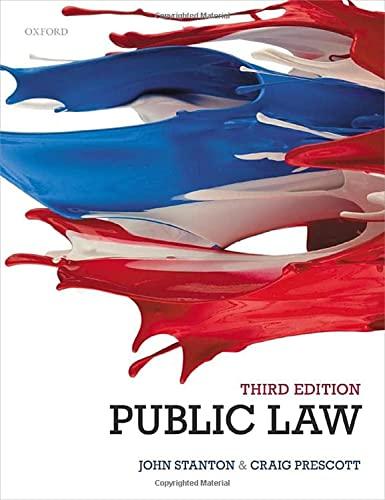Question
Please help me reply to this discussion post...Thank you! In Zills vs. Brown, both plaintiff and defendants specify numerous issues in their respective briefs, but
Please help me reply to this discussion post...Thank you!
In Zills vs. Brown, both plaintiff and defendants specify numerous issues in their respective briefs, but the conclusive issue, in this case, is whether the trial court misjudged in reversal when it applied the locality rule to exclude testimony on behalf of the plaintiff by medical experts, more particularly the testimony of the plaintiff's medical expert witness, Dr. John Carpenter, Jr. concerning the standard of treatment administered to Thomas Zills by Dr. Brown. This is a medical malpractice action seeking damages for the death of Thomas Zills resulting from the negligence of Drs. Brown and Bradley, both of whom are board certified urologists,for failing to timely diagnose and properly treat Zills' cancer of the testicle in the timely and proper removal of the diseased testicle followed by radiation therapy. During the trial of this action, four medical experts testifying on behalf of the plaintiff were prohibited by the trial court from giving their respective opinions as to whether the treatment of Zills' testicular seminoma administered by Dr. Brown was in accord with the requisite standard of medical care generally adhered to in treating that disease. The trial court refused to allow Dr. Carpenter to testify to the quality of the treatment administered to Zills by the defendants because Dr. Carpenter could not state he knew: the degree of care, skill, and diligence which was ordinarily possessed and used by physicians and surgeons in the general vicinity or general community of Florence, Alabama, during the period of 1974, 1975 with reference to their treatment of seminoma.
It appears that Dr. Carpenter was competent to testify as a medical expert about the treatment administered to Thomas Zills regardless of which rule is applied as to the defendant doctors' duty of care. Ordinarily, the law requires expert medical testimony as to what is or is not the proper practice, treatment, or procedure, in a medical malpractice case; the lack of such evidence is a lack of proof of negligence and is fatal to a plaintiff's case. The original purpose of the supposed locality rule was to allow an expert to assist the jury by testifying to the standard of care a "hypothetical" physician, similarly situated, would have exercised. In ordinary negligence cases, the jurors themselves can determine what a reasonable man would have done, but when they are asked to determine whether a professional person has been negligent or not, they need assistance from other professionals to determine what a reasonable professional would have done, under similar facts and circumstances. The locality rule was designed to assure a doctor that he would be measured against a doctor similarly situatedno more, no less.
By holding that plaintiff did not properly preserve a challenge to Alabama's locality general neighborhood rule, it was not determined that it could not examine the validity and viability of that rule if a proper challenge to it was presented for review. The plurality's holding implicitly overrules a long line of Alabama case that have adopted the "same general neighborhood" standard and have interpreted that phrase to mean the city or community in which a doctor practices and the surrounding areas. The Alabama Supreme Court considered the various rules for the admission of the testimony of medical experts and concluded that the "same general neighborhood" rule rather than the "strict locality" rule applied in Alabama. It was held that the trial court properly applied the locality rule as set forth in the case law of Alabama and codified in the 1975 Code of Alabama and that the trial court properly refused to admit the testimony of Dr. Carpenter and therefore the ruling of the trial court was affirmed.
Zills v. Brown, 382 So. 2d 528 (Ala. 1980).
Step by Step Solution
There are 3 Steps involved in it
Step: 1

Get Instant Access to Expert-Tailored Solutions
See step-by-step solutions with expert insights and AI powered tools for academic success
Step: 2

Step: 3

Ace Your Homework with AI
Get the answers you need in no time with our AI-driven, step-by-step assistance
Get Started


